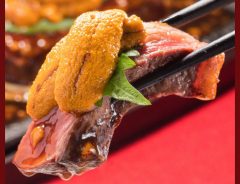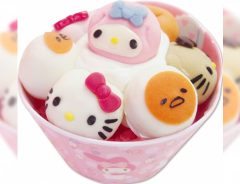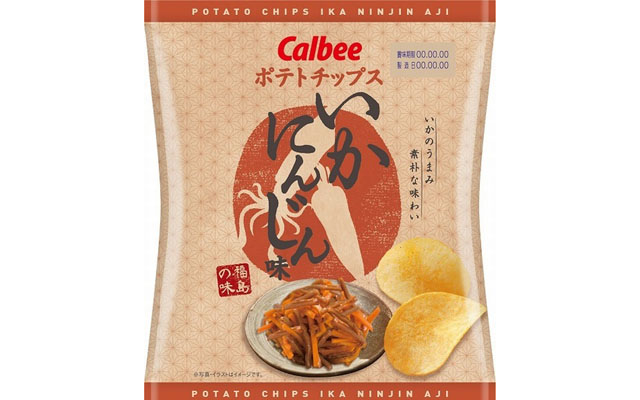- Source:
- Calbee / @tokyoai_hiroko
Related Article
-

VR Love Scenario And Cotton Wife Will Make You Forget About Loneliness
-

Japanese Artist Teases Appetites With Shiba Inu Butt And Face Bread Creations
-

Forget Pedicures — Get These Pre-Painted Nail Stockings Instead
-

A Look Inside Universal Studios Japan’s New Awesome Anime Attractions
-

Japanese Family Restaurant Offers Up Loaded Servings Of Uni and Steak Combo Plates
-

Hello Kitty And Gudetama Desserts Await At The Sanrio Summer Carnival 2016!



You might be familiar with the adventurous and sometimes perplexing flavors of potato chips available in Japan. While the country's flair for leaving no imaginable flavor untouched has become a point of interest for foreigners and a sort of self-aware quirky pride for Japan, the latest in a line of bold and brave potato chip flavors is actually rooted in traditional regional Japanese cooking: squid and carrot flavored potato chips.
Source: Calbee
What will no doubt strike many as an odd flavor for potato chips is actually a local specialty of Fukushima prefecture, Ikaninjin ("Ika" means "squid", and "ninjin" means "carrot"), or squid and carrots. The dish is made of thin slivers of carrots and dried squid, marinated in soy sauce, vinegar, and sake. You can take a look at the actual dish that inspired these chips below.
While it may come off as a bit odd at first, we can at least concede that both Ikaninjin and potato chips make for pretty damn good beer snacks, so perhaps that was one possible bridge. Calbee says that in order to bring out the umami and pure flavor of the squid, Ikaninjin powder was combined with kombu and dried bonito flake extract were used in this curiously potent bag of chips. Altogether, Calbee hopes that the rustic flavor of these chips, similar to dashi, can awaken nostalgic feelings for friends and family in Fukushima.
Much like the dish that these chips take their flavor from, they will be a regional specialty, available only in Japan's northern prefectures, and not for sale in convenience stores. They go on sale starting May 9th, and will run into the beginning of June.